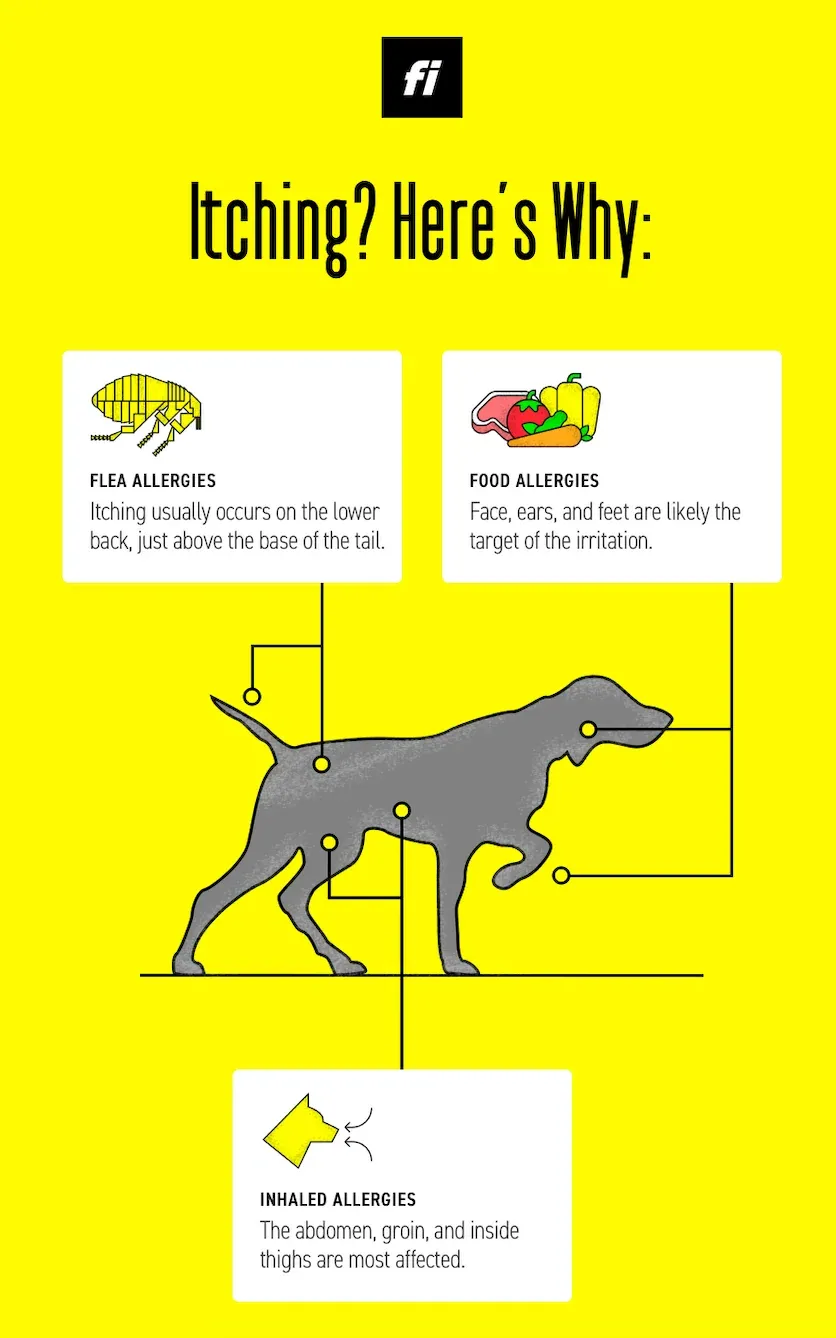It’s Summer, and it’s likely that your dog is getting a lot of outside play time (in fact, Fi confirmed that since COVID-19, dogs are getting 15% more steps per day than usual). New smells and walk routes can be exciting, but can also mean exposure to unfamiliar allergies!
If you are a seasoned dog parent, you probably already know this, but our dogs can suffer from allergies just like we do. But unlike people whose allergies usually manifest as respiratory problems, allergies in our dogs most often manifest as skin problems—something vets call ‘allergic dermatitis’, and something pet parents call ‘why is my dog so itchy?’. Whether the offending allergen is inhaled pollen from grasses, trees, weeds, or molds, bites from insects—especially fleas, direct contact with household items like cotton, wool, feathers, tobacco smoke, house dust, house dust mites, or even the dander from other pets, our dogs will usually present with skin problems.
Typically, these affected dogs will present to us with a complaint of intense itching—so bad at times that your dog’s scratching will keep you up at night! The skin will be very red and inflamed, often with scabs or sores, and you might often see patches of hair loss. With certain allergies, your dog might present with an ear infection, or be rubbing his muzzle or chewing at his feet.
Diagnosing allergies can be very challenging, though we do a much better job today than we could years ago. Often, especially with dogs, the area of his/her body most affected by the allergies can give us a clue as to the offending allergen:
- When most of the lesions appear on the lower back, or rump, just above the base of the tail, we think flea allergy.
- When the abdomen, groin, and inside thighs seem to be most affected, we think inhaled allergies.
- When the face, ears, and feet seem to be the target of the irritation, we put food allergies high on our list.

Of course, eliminating known offending allergens, like fleas, confirmed household allergens like tobacco, fabrics, dust, etc. is critical when trying to reduce allergy symptoms in your dog. Without allergies to distract your dog from the regular activity he/she should be getting, you’ll see an all-around improved pup.
Shampoos and topical sprays, as well as nutritional supplements to reduce irritation and enhance the skin’s natural oils, can be a great way to treat simple dermatologic allergic reactions. Once the offending allergens are identified, a dog can also be desensitized by giving allergy “shots,” which a pet owner can be taught to do at home, or by administering sublingual drops—allergy drops placed into a pet’s mouth under the tongue using a small dropper.
If you believe your pet’s allergy to be more severe, consult your veterinarian for more in-depth tests and a diagnosis so your pup can get back to playing instead of scratching.

